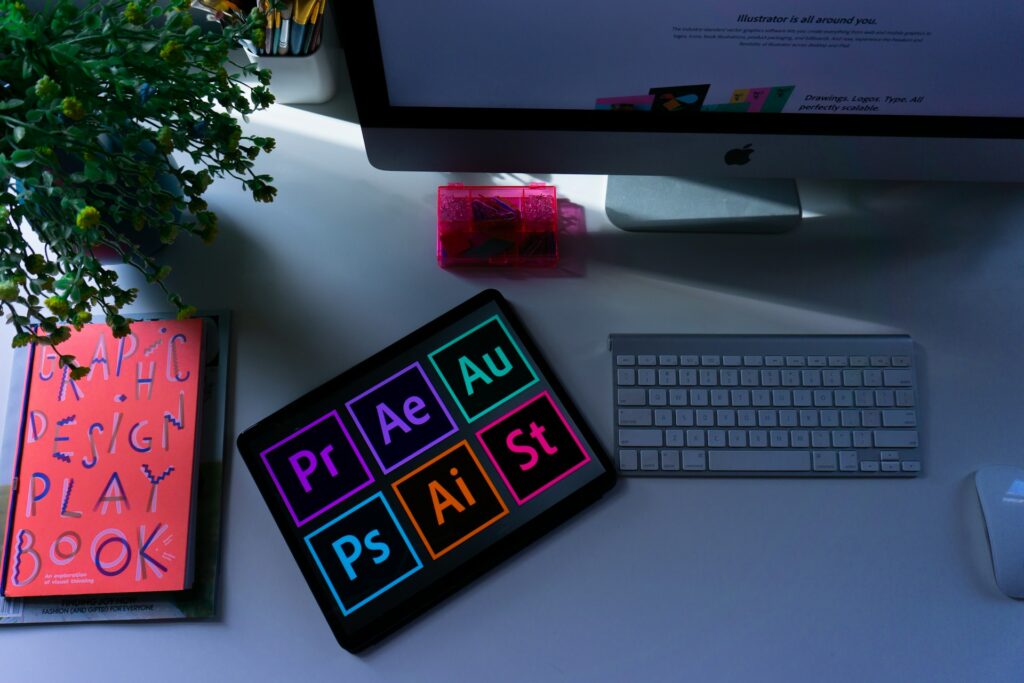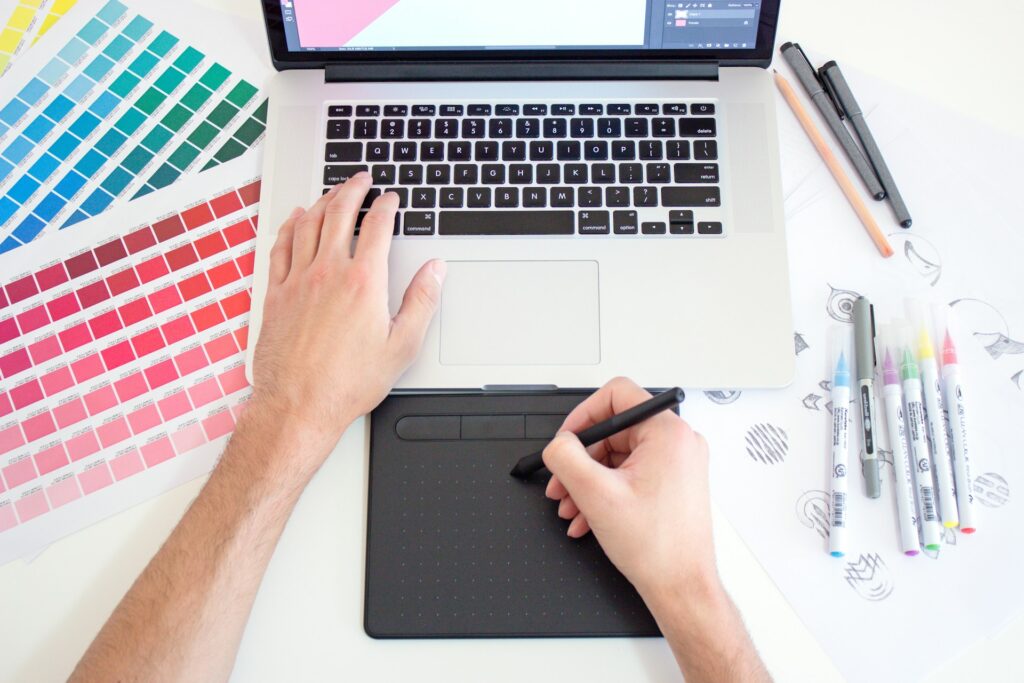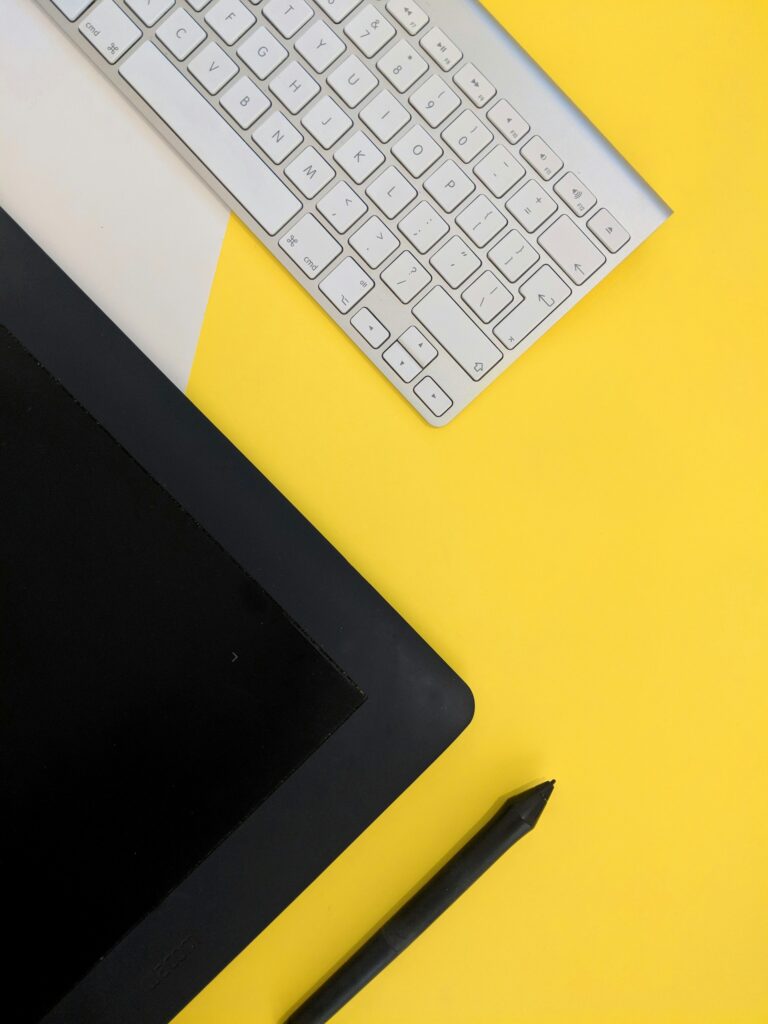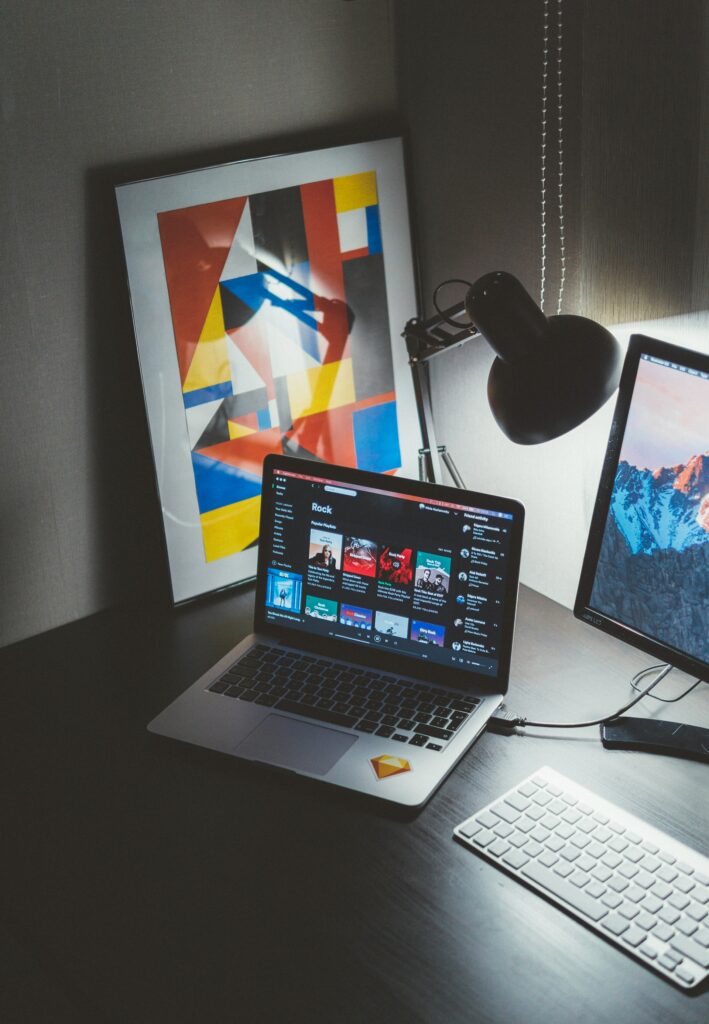The graphic design industry, with its rich tapestry of creativity and innovation, stands on the cusp of a new era—an era where artificial intelligence (AI) is beginning to leave indelible marks on the canvas of this profession.
As we navigate through this transformative period in the world of graphic design, it is essential to ponder the implications of AI’s burgeoning role. Will it serve as a catalyst for unprecedented creativity or become a hindrance, stifling the very essence of human ingenuity?
The Creative Ally: AI As A Tool For Enhancement
Unleashing Creativity With AI-Assisted Design
One cannot overlook the potential of AI as a powerful tool in the graphic designer’s arsenal. AI algorithms, with their ability to process vast amounts of data and discern patterns, can offer designers a treasure trove of inspiration.
Imagine an AI that can analyse current design trends across the globe in real-time, providing designers with insights that could take days or even weeks to compile manually. This could lead to a surge in creativity, as designers are equipped with a broader understanding of the visual zeitgeist, enabling them to craft designs that resonate with contemporary audiences in a symbiotic kind of working relationship.

Streamlining Workflow & Efficiency
AI’s capacity to automate mundane tasks is perhaps one of its most lauded features. In graphic design, this could translate to automated layout adjustments, colour corrections, AI video generators, and even preliminary concept generations. Such automation can free designers from the shackles of repetitive tasks, allowing them to focus on the more creative aspects of their projects. Moreover, AI-powered tools can facilitate rapid prototyping, enabling designers to iterate and refine their ideas with unprecedented speed and efficiency.
Personalisation At Scale
In an age where personalisation is king, AI’s ability to tailor designs to individual preferences is invaluable. By analysing user data, AI can help create designs that cater to specific demographics, cultural backgrounds, or even individual tastes. This level of personalisation, which would be laborious and time-consuming to achieve manually, can help businesses deliver more engaging and effective visual content to their audiences. Indeed, professionals have realised that it helps to have the best image AI generator at your disposal to quickly generate unique, customised visuals that match the needs of diverse audiences. With AI tools, businesses can ensure that their content is both relevant and impactful, fostering stronger connections with their target market.
The advent of AI-generated icons represents a significant leap forward in this domain. These icons, crafted by intelligent algorithms, can be customised to fit seamlessly into a variety of design aesthetics, ensuring that each piece of visual content is not only unique but also resonates with its intended audience.

The Creative Adversary: AI As A Potential Threat
The Dilution Of Human Touch
While AI can enhance the technical aspects of design, there is a growing concern that it may dilute the ‘human touch’—the unique creative signature that each designer brings to their work. Graphic design is not merely about aesthetic appeal; it is also about conveying emotion and telling a story. The intuitive leaps and the emotional intelligence that human designers bring to the table are not easily replicated by algorithms. If the industry becomes overly reliant on AI, we risk creating a homogenised landscape of designs that lack the warmth and connection that only human creativity can forge.
Job Displacement & The Devaluation of Skills
The spectre of job displacement looms large in any discussion about AI. As AI tools become more sophisticated, there is a legitimate fear that they could replace human designers, particularly in the realms of entry-level design work. This could lead to a devaluation of design skills and potentially erect barriers for aspiring designers who are trying to enter the profession.
Ethical & Intellectual Property Concerns
AI’s ability to generate designs raises complex ethical questions, particularly around the ownership of creative work. If an AI produces a design, who owns the intellectual property—the designer who provided the input, the company that developed the AI, or the AI itself? Furthermore, as AI systems learn from existing designs, there is a risk of inadvertent plagiarism, where the AI replicates elements of copyrighted works without attribution.


Striking A Balance: The Future Of Graphic Design With AI
The integration of AI into graphic design is not a question of ‘if’ but ‘when’. To harness the benefits while mitigating the risks, the design community must adopt a balanced approach.
Education and upskilling will be crucial; designers must learn to work alongside AI, using it as a tool to augment their creativity rather than a replacement for it. The industry must also develop robust ethical guidelines to govern the use of AI in design, ensuring that creativity and originality are preserved and that the rights of designers are protected.
The Bottom Line
AI has the potential to be both a formidable ally and adversary to the graphic design profession. It promises to unlock new realms of creativity and efficiency but also poses significant challenges that must be addressed with care and foresight. As we stand at this crossroads, the choices we make today will shape the future of graphic design for generations to come. It is our collective responsibility to ensure that this future celebrates the symbiosis of human and artificial creativity, rather than the dominance of one over the other.




